
All categories
Featured selections
Trade Assurance
Buyer Central
Help Center
Get the app
Become a supplier

(913 products available)









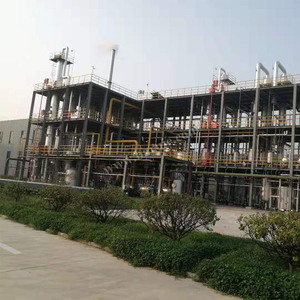
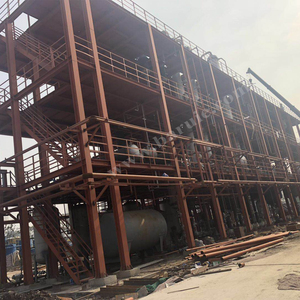











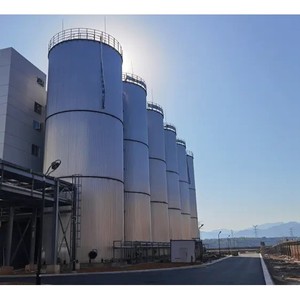

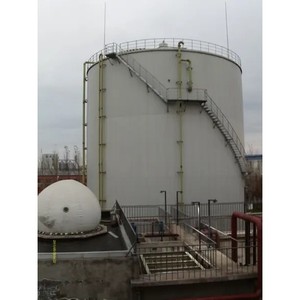
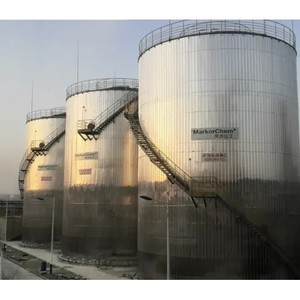








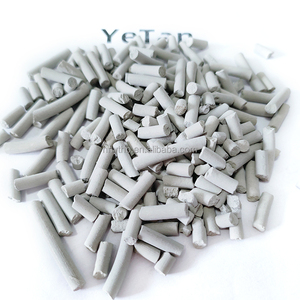

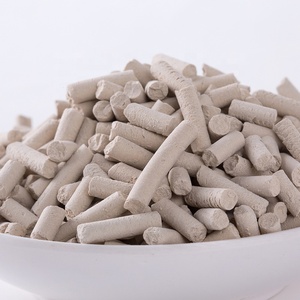



Zeolite-based Catalysts
One of the most commonly used types of oil refinery catalyst is the zeolite-based catalyst. These catalysts employ zeolite, a porous aluminosilicate mineral, which possesses remarkable acid properties that make it highly effective for catalytic processes. In petroleum refining, zeolite-based catalysts are mainly used in processes like fluid catalytic cracking (FCC) and hydrocracking.
The pores in zeolite enable the catalyst to selectively process different hydrocarbon molecules, thus improving the yield and quality of the refined products. The significant advantage of zeolite-based catalysts is their ability to convert heavier feeds into valuable lighter products, such as gasoline and diesel, while minimizing the production of undesired heavier by-products.
Platinum-group Metals (PGMs) Catalysts
Platinum, palladium, rhodium, and other platinum group metals are widely used in refinery catalysts, especially in hydrocracking and reforming processes. PGMs are highly effective at activating and breaking chemical bonds because of their ability to facilitate complex reactions with less energy.
Palladium, for example, is used in hydrocracking to convert heavy oils into lighter, more valuable products. Rhodium is commonly applied in catalytic converters to reduce harmful emissions, but it is also employed in petroleum refining, particularly in assist reducing oxidation reactions.
PGMs offer high activity and selectivity, but their high cost and sensitivity to poisoning (e.g., by sulfur or nitrogen compounds) are some of the major factors that limit their widespread applications.
Transition Metal Catalysts
Apart from PGMs, other transition metals such as nickel, molybdenum, and tungsten are also used in refinery catalysts. These metals are often supported on porous materials like alumina or activated carbon in sulfide form and are primarily used in hydrotreating and hydrocracking processes.
Nickel-molybdenum and tungsten-based catalysts are especially useful for removing contaminants like sulfur, nitrogen, and oxygenates from crude oil or processed feedstocks. By doing this, they help to produce cleaner fuels and protect downstream catalysts from poisoning.
These catalysts are more affordable than PGMs, although they generally require harsher reaction conditions (higher temperatures and pressures) to attain similar activities.
Acid-base Catalysts
Oil refinery catalysts are classified as acid-base catalysts that exploit the synergistic action of acid and base sites on their surface to facilitate specific reactions. Such catalysts are particularly useful in processes like alkylation and isomerization, which require both acidic and basic sites to convert feedstock such as olefins and paraffins into high-octane gasoline components.
Solid acid/base catalysts, for instance, often contain metal oxides like zirconia and tungsta, provide better selectivity and stability than pure acid or base catalysts. These acids and base catalysts are advantageous because they allow the refining process to be carried out with less corrosiveness than traditional liquid acid or base catalysts, thus improving safety and reducing equipment wear.
Bimetallic Catalysts
Bimetallic catalysts have two types of metals integrated in one catalyst to exploit the unique properties of each metal for synergistic effects. Such catalysts are increasingly popular in petroleum refining as they improve activity, selectivity, and resistance to poisoning. For example, platinum-rhodium catalysts are used in catalytic reforming to produce high-octane gasoline.
By combining these two metals, the catalyst can better convert naphtha into aromatics with less deactivation caused by feed impurities. Likewise, bimetallics have also demonstrated improved performance in hydrotreating and hydrocracking, where platinum-tungsten and palladium-molybdenum catalysts give better results than monometallic ones.
Catalytic Activity
The catalytic activity refers to the ability of the catalyst to facilitate refining reactions, thus, determining how efficiently a catalyst will be able to convert raw materials into desired products. Highly active catalysts process feedstocks at faster rates and under milder conditions, which helps save energy and costs. Often, catalysts with greater activity are made from PGMs, zeolite-based materials, and bimetallic catalysts.
Stability and Selectivity
Stability and selectivity are two other major features that are considered in oil refinery catalysts. Stability refers to the capability of a catalyst to retain its activity over time without deactivation from impurities, such as sulfur, nitrogen compounds, or metals in the feedstock. File(references) selectivity, on the other hand, is the ability of the catalyst to preferentially produce desired products while minimizing the yield of less valuable ones. For instance, in catalytic cracking, selectivity ensures the catalyst favors lighter olefins and paraffins over heavier by-products.
Good selectivity gives higher yields of desired outputs, thus saving costs and time, while enhanced stability decreases the frequency of catalyst regeneration or replacement, so improving the overall refinery process's reliability and sustainability.
Resistance to Poisoning
Catalyst poisoning occurs when contaminants in the feedstock, such as sulfur, nitrogen, or metals, occupy active sites on the catalyst surface and reduce its efficiency. The best catalysts for oil refiners exhibit strong resistance to poisoning, which enables them to maintain catalytic activity, even in feeds with high levels of these contaminants. Some PGMs, for example, have a very strong catalytic site affinity for certain pollutants, which can easily saturate or block these sites, leading to rapid deactivation.
However, refractory catalysts incorporate advanced materials or active site architectures that either repel contaminants or enable quick desorption to diminish poisoning effects. Such catalysts are particularly valuable in treating heavy feeds or atmospheric residues with high sulfur, metal, or nitrogen content, as they prolong catalyst life and sustain refinery operations.
Environmental Impact
Oil refinery catalysts significantly affect the environmental impact of the refining process, such as controlling emissions, increasing efficiency, and reducing energy consumption. Specifically, catalysts employed in hydrotreating and desulfurization catalysts eliminate sulfur and nitrogen compounds from fuels to reduce air pollution caused by sulfur and nitrogen oxide emission.
Furthermore, advanced catalysts enable refineries to process heavier, dirtier crude oils with lower energy requirements. This reduced work translates into lower greenhouse gas emissions. In addition, the use of more effective catalysts minimizes the need for toxic chemicals and thus reduces waste and worker exposure.
Hydrocracking
Hydrocracking is a major refinery process that uses catalysts to convert heavy feedstocks into lighter, more valuable products, such as diesel, jet fuel, and refinery naphtha. This process entails treating feeds such as vacuum gas oil or residuum with hydrogen under high pressures and temperatures in the presence of a bifunctional catalyst that contains both metallic (e.g., nickel, tungsten) and acidic sites (e.g., zeolite, alumina).
Hydrogen helps in breaking large molecules and eliminating impurities, while the acidic sites facilitate molecule restructuring to yield high-quality outputs. Because of the increasing demand for the above-mentioned products, hydrocracking is commercially valuable as it provides greater operational flexibility to refineries, thus enabling them to produce a wide range of fuels and chemicals.
Fluid Catalytic Cracking (FCC)
Fluid catalytic cracking (FCC) is one of the most commonly employed processes in modern refineries that utilize an FCC catalyst to convert heavy oil fractions into lighter gasoline, diesel, and olefins. It achieves this by breaking large hydrocarbons using the catalyst's acid sites.
FCC catalysts are usually complex materials comprising zeolite, metal oxide, and non-porous silica-alumina to optimize catalytic activity and selectivity. FCC catalysts have a very large commercial value because they enable refineries to maximize the yield of high-demand fuels from available feedstock.
Desulfurization and Clean Fuels Production
Desulfurization is the process that refers to the removal of sulfur compounds from crude oil or fuel stocks to produce cleaner, high-quality fuels with sulfur content reduced to acceptable levels. This process involves using hydrotreating catalysts, which commonly comprise nickel-molybdenum or tungsten catalysts supported on alumina.
These catalysts effectively break sulfur bonds and reactivate hydrogen, enabling sulfur elimination in the form of hydrogen sulfide. The significance of desulfurization catalysts is that they help meet stringent environmental regulations on sulfur emissions, thus producing sustainable fuels that are less polluting and safer for the ecosystems.
Chemical Production
Refinery catalysts have very valuable roles beyond fuel production, as they are also used to manufacture numerous chemicals. For instance, catalytic cracking produces feedstocks like propylene and butylene, which can be further processed into plastics, solvents, and other chemical intermediates.
Likewise, catalytic reforming transforms naphtha into high-octane gasoline or aromatic solvents, which are commercially valuable in the production of synthetic fibers, detergents, and chemicals. The versatility of refinery catalysts in producing fuels and chemicals makes them highly valuable for integrated refining and chemical manufacturing operations.
Selecting the right refinery catalyst requires careful consideration of several key factors. These factors include the refinery's process objectives, feedstock characteristics, and the desired product slate, as well as the catalyst's performance, stability, selectivity, and cost.
Process Requirements
The choice of catalyst to use greatly depends on the specific refining process, such as fluid catalytic cracking (FCC), hydrocracking, or hydrotreating, which will determine the types of catalytic materials needed to support the desired reactions. For instance, FCC catalysts typically comprise zeolite-based materials that are suitable for cracking reactions. Hydrocracking, on the other hand, requires bifunctional catalysts, such as nickel-molybdenum, which contain both hydrogenation and dehydrocracking active sites.
Feedstock Composition
Feedstock composition is another critical consideration, as the type of crude oil or feedstock processed will affect catalysis required to withstand impurities or contaminants. For example, heavy or residuum feedstocks that contain high concentrations of sulfur or metal require robust catalysts with high resistance to poisoning (e.g., bimetallic, PGMs). A catalyst that handles this typical feedstock will provide better stability and performance.
Product Yield and Selectivity
Catalysts in oil refineries are optimized to improve not only process efficiency but also product yield within the selectivity framework. Selectivity is the catalyst's ability to favor specific reactions, thus impacting the yield of desired products, such as gasoline, diesel, or chemicals. In refinery catalysts, for instance, yields of lighter olefins, paraffins, or gasoline are maximized by catalysts with higher selectivity toward cracking reactions.
Likewise, hydrocracking catalysts are designed to improve the yield of targeted products, such as jet fuel or diesel, by adjusting the hydrogenation to isomerization dehydrogenation ratio.
Stability and Lifespan
Stability and longevity are essential in determining refinery catalyst selection, where these catalysts must be able to sustain high activity over time without significant deactivation from impurities present in the feedstock. Catalysts with high thermal stability, such as bimetallic or zeolite-based materials, are suitable for high-temperature processes like FCC.
Moreover, long-lasting catalysts reduce the need for frequent regeneration or replacement, thus minimizing operational costs and downtime in refining.
Cost Considerations
Cost is a very critical factor, especially when determining the catalyst to use, and settling for the right balance between performance and economic feasibility is key. Often, PGMs, like platinum and palladium, which are costly, are used for hydrocracking, while nickel-molybdenum catalysts are more affordable, though they require harsher conditions to achieve the same activity.
Catalyst costs should also include the long-term benefits that improved catalyst activity, selectivity, and durability can provide in terms of enhanced fuel yields, lower energy consumption, and reduced emissions.
A1. Catalysts increase the rate of chemical reactions during fuel production inside oil refineries without getting consumed in the process. They help break large molecules apart and, at the same time, allow smaller ones to connect through different methods, thus converting crude oil into desired fuels and chemicals.
A2. Refinery catalysts work by providing active sites on their surfaces where reactant molecules can temporarily adsorb, allowing bonds to weaken or break. The molecules then reform as products release with new bond connections, often involving energy transfer. This process continues through the catalyst's various active sites until the feedstock is fully converted into lighter fractions.
A3. Zeolite-based materials and PGMs, such as platinum and palladium, are the most common refinery catalyst. These catalysts have excellent thermal stability, high selectivity, and resistance to poisoning, making them suitable for complex refinery processes.
A4. Refinery catalysts are said to be environmentally friendly because they enable more sustainable refining processes by increasing efficiency, reducing energy consumption, and lowering harmful emissions. There is also a reduction in air pollutants.